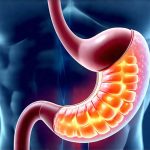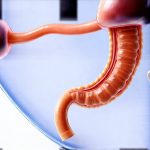Many people experience uncomfortable feelings of fullness, bloating, and even nausea after meals, often attributing it to something they ate or simply “being sensitive.” While food sensitivities can certainly play a role, the underlying cause is frequently far less obvious: low stomach acid production, also known as hypochlorhydria. This isn’t about having too much acid; it’s about not having enough of the right kind, leading to incomplete digestion and a cascade of uncomfortable symptoms that many mistake for other conditions. Understanding this often-overlooked issue is the first step towards restoring comfortable digestion and overall wellbeing.
The digestive process relies heavily on stomach acid to break down food, particularly proteins, and to sanitize ingested material. When acid production is insufficient, food sits undigested in the stomach for longer periods. This creates a breeding ground for bacteria, leading to fermentation and gas production – the root of bloating and feelings of fullness. More importantly, poorly digested food isn’t properly signaled to the small intestine, disrupting the entire digestive process and potentially hindering nutrient absorption. The resulting discomfort can mimic symptoms of conditions like Irritable Bowel Syndrome (IBS) or food intolerances, leading many on a frustrating search for answers that may lie in restoring proper stomach acid levels. Understanding the connection between these symptoms can be the first step toward relief.
Understanding Stomach Acid & Digestion
Stomach acid, primarily hydrochloric acid (HCl), isn’t just about dissolving food. It’s a critical component of the digestive cascade, initiating several crucial processes. Firstly, it denatures proteins – unfolding their complex structures to make them more accessible for enzymatic breakdown. Without sufficient HCl, protein digestion is severely impaired, potentially leading to deficiencies and impacting various bodily functions. Secondly, stomach acid activates pepsin, an enzyme essential for breaking down proteins into smaller peptides. Pepsin requires an acidic environment to function effectively; without it, protein digestion remains incomplete. Finally, the acidity of the stomach acts as a barrier against harmful bacteria ingested with food, preventing them from reaching the small intestine and causing infection or imbalance in gut flora.
The production of HCl is a complex process influenced by various factors including age, stress levels, diet, and certain medications. As we age, natural acid production tends to decline. Chronic stress can also suppress digestive function, impacting acid output. Furthermore, long-term use of proton pump inhibitors (PPIs), commonly prescribed for heartburn, actually reduce stomach acid production – creating a cycle where the initial problem is addressed but underlying digestive health is compromised. A diet lacking in essential nutrients or rich in processed foods can also contribute to decreased acid production over time. Many find that meal timing plays a huge role in managing their symptoms, too.
The Consequences of Low Stomach Acid
Low stomach acid doesn’t just lead to immediate discomfort; it has far-reaching consequences for overall health. The incomplete digestion of proteins, as mentioned earlier, can result in malabsorption of vital nutrients like vitamin B12, iron, calcium, and zinc. Vitamin B12 deficiency, for example, can cause fatigue, neurological problems, and anemia. Similarly, poor calcium absorption increases the risk of osteoporosis. Beyond nutrient deficiencies, undigested food passing into the small intestine provides a feast for undesirable bacteria, leading to Small Intestinal Bacterial Overgrowth (SIBO).
SIBO is characterized by an excessive amount of bacteria in the small intestine, where they shouldn’t be. These bacteria ferment undigested carbohydrates, producing gases like hydrogen and methane that contribute to bloating, abdominal pain, and changes in bowel habits. SIBO can also damage the intestinal lining, leading to increased permeability (often referred to as “leaky gut”) and potentially triggering systemic inflammation. This chronic inflammation is linked to a wide range of health problems, including autoimmune diseases, allergies, and mood disorders. It’s important to understand gut health as it relates to overall wellbeing.
Symptoms Beyond Bloating & Fullness
While bloating and feelings of fullness are hallmark symptoms of low stomach acid, the presentation can be surprisingly varied. Nausea, particularly after meals, is common as the undigested food irritates the stomach lining. Diarrhea or constipation can also occur, depending on how the digestive system attempts to compensate for incomplete digestion. Some individuals may experience heartburn, which seems counterintuitive given low acid levels – but it’s often a result of fermentation creating pressure and forcing stomach contents upwards.
More subtle signs include undigested food particles in stool (visible as pieces of vegetables or other recognizable foods), skin problems like eczema or acne (linked to inflammation and malabsorption), and even fatigue due to nutrient deficiencies. Many people with low stomach acid are also prone to food sensitivities because their digestive system struggles to properly break down and process foods, leading to immune reactions. This can be exacerbated by histamine intolerance.
Restoring Digestive Function: Practical Steps
Addressing low stomach acid isn’t about simply taking an antacid or PPI; it’s about supporting the body’s natural digestive processes. Lifestyle modifications often play a significant role, starting with mindful eating habits. This means slowing down during meals, chewing food thoroughly to begin the digestion process in the mouth, and avoiding distractions while eating. Eating smaller, more frequent meals can also reduce the burden on the digestive system. Stress management techniques like meditation, yoga, or deep breathing exercises are essential, as stress directly impacts digestive function.
Dietary changes are equally important. Reducing processed foods, sugar intake, and excessive caffeine consumption can all help to improve digestion. Incorporating fermented foods into your diet – such as sauerkraut, kimchi, yogurt (if tolerated), and kefir – introduces beneficial bacteria that support gut health. Prioritizing protein-rich foods is crucial for stimulating acid production, but it’s important to choose easily digestible sources like fish, poultry, or legumes. Finally, staying adequately hydrated throughout the day supports optimal digestive function. Physical activity can also help; in fact, there’s a connection between physical inactivity and increased episodes of indigestion.
Supplementation & Further Investigation
While lifestyle and dietary changes are foundational, supplementation can sometimes be helpful in supporting stomach acid production. Betaine HCl with pepsin is a common supplement used by some individuals, but it should only be taken under the guidance of a healthcare professional as it introduces additional acid into the system and could exacerbate existing conditions like ulcers or heartburn if not appropriate. Digestive enzymes can also aid in breaking down food, reducing the strain on the digestive system.
However, before self-treating with supplements, it’s important to rule out other potential causes of digestive symptoms and determine the extent of your low stomach acid. A comprehensive digestive stool analysis (CDSA) can provide valuable insights into gut health, identifying imbalances in bacteria, enzyme levels, and markers of inflammation. Working with a qualified healthcare practitioner – such as a functional medicine doctor or registered dietitian – is essential for developing a personalized plan that addresses the root cause of your digestive issues and supports optimal wellbeing. It’s also important to rule out thyroid disorders as they can often mimic gastrointestinal symptoms, and understanding meal frequency is also important when considering your dietary options.


















